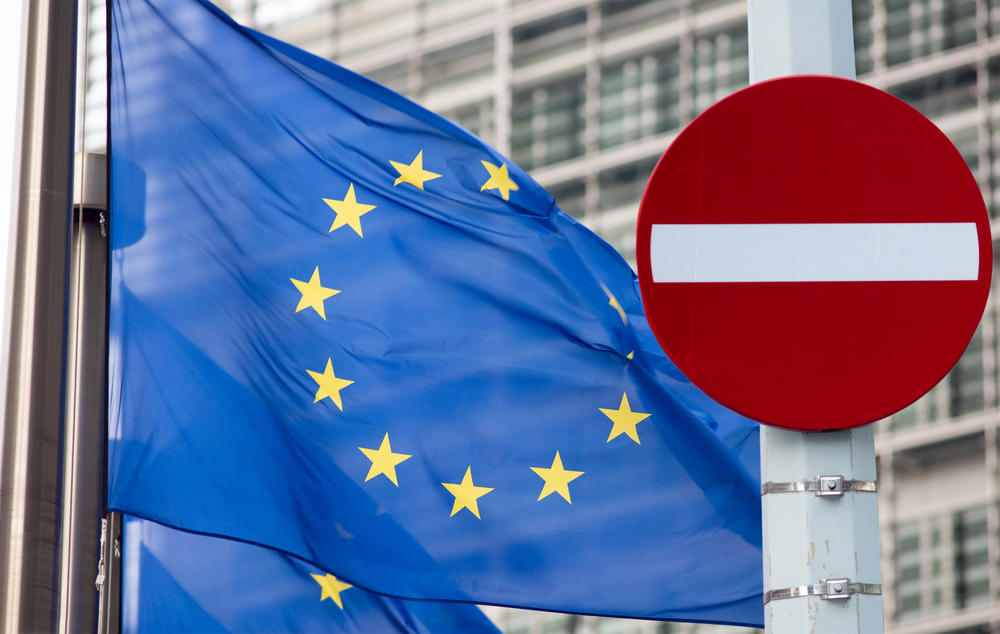European Union Authority Talks Blockchain Tech…and Banning It

The European Securities and Markets Authority (ESMA) will soon have the power to ban blockchain or distributed ledger technology (DLT), come January 1, 2018.
Speaking at a London conference called “Blockchain Technology: The Future for Financial Services”, last week, senior ‘risk analysis’ officer Patrick Armstrong spoke [PDF] about the challenges and opportunities with blockchain technology. Armstrong is a part of the Innovation and Products team at ESMA, the Paris-based EU financial regulatory authority that establishes legislation and regulation for European financial markets.
The blockchain-specific conference saw Armstrong reveal how the ESMA came to know about the technology.
He stated:
ESMA began examining the topic in early 2013 as the virtual currency known as ‘bitcoin’ became a widely-known alternative payment service. ESMA then began analyzing the degree to which there existed investment products that used virtual currencies as an underlying asset.
While these investment products were “marginal” then, over time, the ESMA added that the market shifted from a focus on virtual currencies, like bitcoin, to its underlying technology, in blockchain.
Soon enough, the ESMA was involved in the setting up of a “DLT Task Force” which saw participation from other agencies including the European Commission and the European Central Bank. Among other proposals, the former has sought to establish a centralized database record of bitcoin users, while the latter has notably shown skepticism with digital currencies. In recent times, the ECB proposed a directive to exempt virtual currencies from any qualification as, a currency.
The Options
The advent of blockchain technology and the regulatory response to the innovation is a “critical topic” for the market and the regulators, Armstrong stressed.
The official further revealed that a key challenge was to ascertain exactly when the ESMA should step in. “This is the regulatory ‘tipping point —the point between ‘too small to care’ and ‘too large to ignore’,” he stated.
Talking about the first of three different approaches the regulator could take, Armstrong said:
The first, banning, is a power that ESMA and the MSs will have once MiFID II/MiFIR becomes effective on 1 January 2018. Until then, if we believe a harmful ‘tipping point’ has been reached, we can take measures such as issuing warnings as we have done [before].
The MiFID or the Markets in Financial Instruments Directive is the framework of the EU’s regulation of financial markets across member states. In October 2011, the European Commission sought to revise regulations following the financial crisis in order to improve the efficiency, transparency and resiliency of financial markets. In turn, MiFID II/ MiFIR will further empower the ESMA to develop draft regulatory technical standards (RTS) and draft implementing technical standards (ITS). Ultimately, the new rules will bring a “significant part of OTC trading onto regulated platforms.”
The second, a “wait and see” approach is one that is already taken by most regulators, including the ESMA, Armstrong added. A third approach would see the ESMA facilitate and regulate a product or processes due to its potential for economic and social benefits.
Still a “Wait and See”
While all three approaches have been discussed, deliberated and enforced by regulators around the world, Armstrong confirmed that the ESMA will continue its “wait and see” approach with blockchain technology, ruling out any banning order.
He stated:
We can rule out the first – restrict approach as we do not see the DLT presently posing risk to our three objectives – stability, protection and integrity.
Ultimately, it a “balancing act” between regulation and technology for regulators, Armstrong stated, noting that the ESMA will revisit its approach and framework on “a regular basis” to stay effective and relevant.
Image credit: Shutterstock.